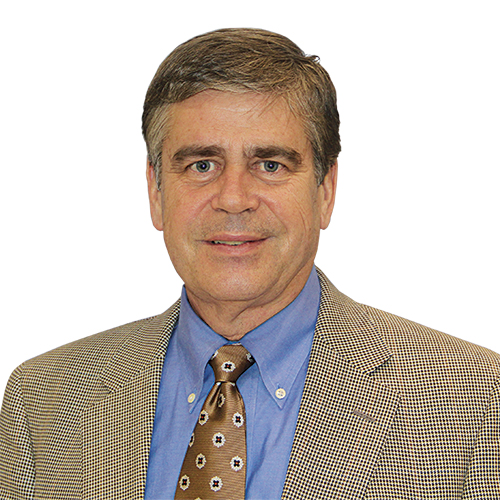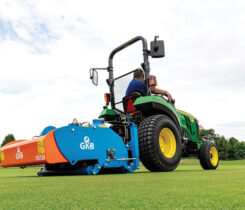Turf MD: Keeping organic matter under control

Karl Danneberger
Managing the top 1 inch to 2.5 inches of sand-based root zone is critical to the long-term success of putting greens. Organic matter accumulation that occurs between the green vegetation (sward) and the soil surface is often referred to as the thatch and/or mat layer.
Thatch is defined as a tightly intermingled layer of dead and living stems, roots and crowns that occurs between the green vegetation and the soil surface. Mat is similarly defined as thatch, except it is generally in a more decomposed state because of the inclusion of soil or a mineral component like sand. Mat forms when sand topdressing alone or in conjunction with coring occurs. Sand root zones are not as conducive as a general “soil” for thatch breakdown.
Thatch accumulation is dependent on several factors, including the health of the turf (a vigorous growing turf is more apt to produce more stems and roots) and the turfgrass species (turfgrasses that have stolons and/or rhizomes can produce more thatch).
For example, a healthy sward of creeping bentgrass or bermudagrass produces more thatch than a healthy annual bluegrass or perennial ryegrass.
Differences within a species also influence thatch accumulation. The new high-shoot-density creeping bentgrass cultivars (As and Gs) tend to accumulate thatch at a greater rate than the moderate-shoot-density cultivars.
Similar tendencies occur with bermudagrass varieties. A study conducted in Australia showed that the new bermudagrass ultradwarfs produce a considerable amount of thatch compared to Tifdwarf and Tifgreen. Mini Verde was reported to have the highest thatching tendency (Roche et al., 2010).
Mat occurs with the introduction of topdressing. The addition of topdressing makes the environment more favorable for microbial breakdown of the thatch layer. It is less conducive for microbial activity and dilutes the thatch, resulting in a less decomposed mat layer. The effective amount of sand topdressing needed to successfully manage the organic matter content in a green’s root zone depends on the turfgrass species and the growing season. For cool-season turfgrasses like creeping bentgrass, the range of sand needed is 20 to 30 cubic feet per 1,000 square feet per year, while with a warm-season turfgrass species like an ultradwarf bermudagrass, that range could be 30 to 60 cubic feet per 1,000 square feet per year.
Regardless of frequency or application methods, the total amount of sand applied is key.
Edward McCoy, Ph.D., a professor of soil physics at The Ohio State University has developed a location-based simulation model of organic matter accumulation, decay, dilution and removal to predict the fate of surface organic matter in sand-based putting greens over time. The model inputs include location, management practice and frequency (i.e., topdressing, coring, etc.)
Impressively, the model can look at long-term effects of sand topdressing or placement into the root zone via coring or Dryject.
What both field research and simulation models show is that approximately 25 cubic feet of sand per 1,000 square feet per year is needed to effectively manage root zone organic matter in cool-season putting greens.
In one simulation in Wooster, Ohio, McCoy noted, “…organic matter contents become nearly unchanged after year 15. Thus, the yearly management operations serve to remove or dilute organic matter within all layers equal to the rates of soil organic matter accumulation and decay. Consequently, over the long term, the twice-yearly core aeration plus seasonal light topdressing applying sand at about 25 cubic feet per 1,000 square feet (per year) is sufficient to maintain reasonably low soil organic matter levels.”
A description of McCoy’s model can be found by searching for McCoy and organic matter at buckeyeturf.osu.edu or at dryject.com. An updated version of McCoy’s model will be available later this summer. For more information, contact McCoy at mccoy.13@osu.edu.











